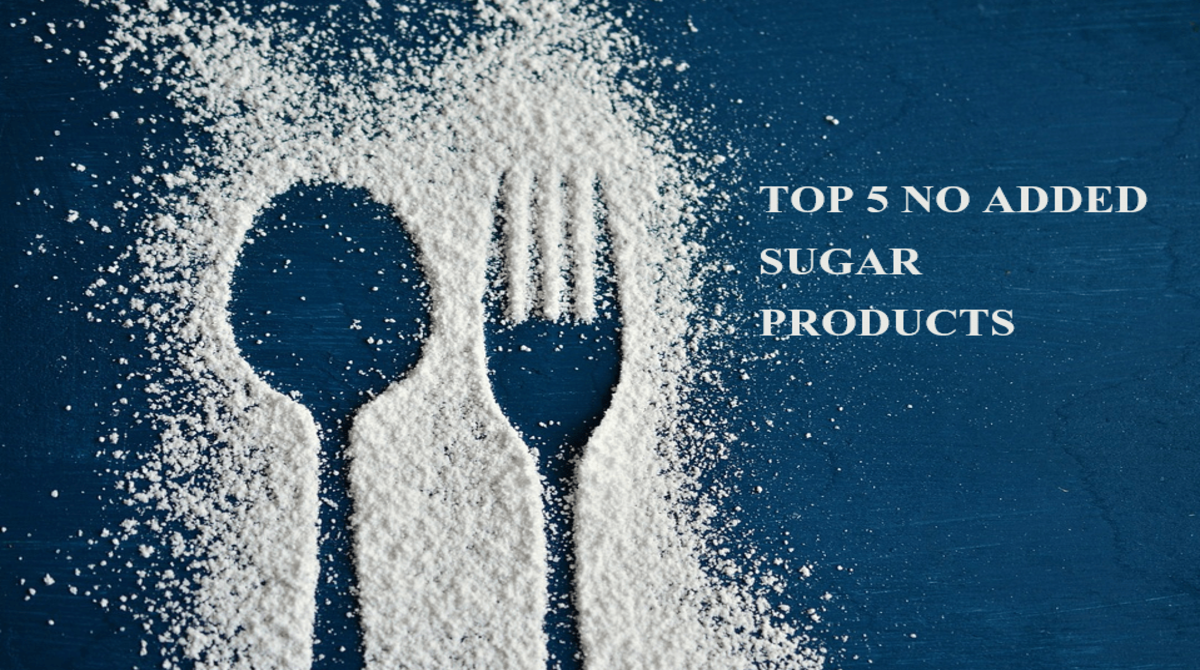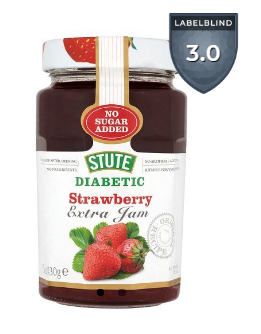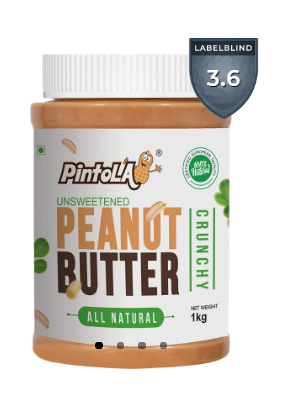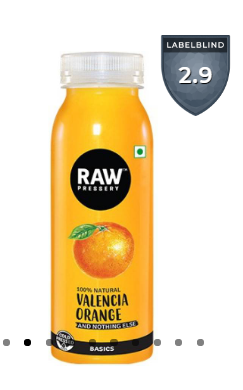Top 5 No Added Sugar Products
July 13, 2022

Ever wondered what ‘No Added Sugar’ on a food or drink package means? Are these products healthier? How to choose? We are here to decode the complexities of such claims for you.
What is Added Sugar?
To understand ‘No Added Sugars’, we first need to know what is Added Sugars. Added sugars are sugars and syrups added to foods during preparation or processing, or at the table. Added sugars add calories without adding nutrients.
Sources of Added Sugar in our diet
Sugar, Honey, and Jaggery that are used in our day-to-day diet for sweetening beverages or adding them to food preparations are all ‘Added Sugars’. What most people are unclear about is that sugar is sugar, whether it comes in the form of refined sugar, brown sugar, honey or jaggery. It will give you 4 calories per gram no matter the source. Some may argue that jaggery is better than sugar as it is unrefined and contains minerals. True, it does contain minerals but these minerals are so minute in quantity that you may have to have a good chunk of it to obtain the same amount of minerals found in a serving of dal/grains/fruit.
Apart from what is used at home to sweeten foods and beverages, processed foods that you buy are other large contributors of added sugar. The ketchup on your fries, the spread in your sandwich, the carton of fruit juice in your fridge, and the cornflakes that your kids eat, all contain added sugars. Bakery items like biscuits, cakes and breakfast cereals, spreads and sauces, ‘fruit’ juices, aerated drinks, ice creams, chocolates, and candy are all sources of ‘Added Sugar’ in our diet.
Recognizing hidden sugar in packaged foods
Identifying added sugars can be confusing. Currently, it is not mandatory for food and beverage manufacturers to declare Added Sugar on the Nutrition Facts panel. Hence, mostly you’ll see Total Sugars listed on packaged foods and drinks. This number includes both natural and added sugars. However, the Food Safety and Standards Authority of India is in the process of updating the regulations to help consumers easily identify how much sugar is added to foods. In the meantime, the only reliable way to identify added sugars is to look at the ingredient list.
Ingredients are listed in descending order by weight. If you see sugar listed among the first few ingredients, the product is likely to be high in added sugars. Powdered ‘Health’ Drink Mixes for children which are marketed as “nutritious” have astonishing amounts of added sugar. If you read the ingredient list, you’ll as sugar is listed as the second or third ingredient.
Here is a list of different forms of sugar that you may find in ingredient lists of various packaged foods and drinks— Cane Sugar, Sucrose, Glucose, Dextrose, Maltose, Maltodextrin, Beet Sugar, Raw Sugar, Brown Sugar, Turbinado Sugar, Demerara Sugar, Coconut Sugar, Invert Sugar, Golden Syrup, Honey, Molasses, Malt, Fruit Juice Concentrate, Liquid Glucose, Corn Syrup, High Fructose Corn Syrup, Maple Syrup.
Why is added sugar bad?
Did you know that India is the diabetes capital of the world? High Sugar diets have been linked to Non-Communicable Diseases (NCDs) like heart disease, diabetes and cancer.
Risk of Diabetes
Consuming a lot of sugar, over a period of time, causes resistance to insulin, a hormone produced by the pancreas that regulates blood sugar levels. Insulin resistance increases the risk of diabetes. Non-communicable diseases (NCDs) like diabetes and heart disease lower the quality of living.
Risk of Heart Disease
The higher the intake of added sugar, the higher the risk for heart disease. Your liver metabolizes sugar the same way as alcohol and converts extra sugar into fat. Over time, this can lead to the accumulation of fat, which may turn into fatty liver disease, which is a contributor to diabetes. This in turn raises your risk for heart disease.
The effects of added sugar intake — higher blood pressure, inflammation, weight gain, diabetes, and fatty liver disease — are all linked to an increased risk for heart attack and stroke.
Health effects on children
High-sugar consumption in the early years of a child’s life predisposes him to obesity, diabetes and heart disease later on in life. Your child’s early eating pattern sets the stage for his future. Tooth decay is another concern among children who consume a lot of sugar. All forms of sugar promote tooth decay by allowing bacteria to multiply and grow, thereby causing cavities.
Recommendations
World Health Organization, Indian Council of Medical Research and many such apex bodies recommend limiting added sugars to less than 10% of Total Energy intake. This equates to less than 50 g of added sugar for adults which is roughly equal to 9 to 10 teaspoons of sugar a day (for non-diabetics). For children aged 2-18 years, American Heart Association recommends added sugars no more than 25 g grams a day, which is equal to 5 teaspoons. A single serving (250 ml) of sugar-sweetened beverages like fruit juice or aerated drinks contain anywhere between 6 to 8 teaspoons of sugar. Top that up with biscuits, bread, sweetened breakfast cereals and tea/coffee that you may consume in a day, and the recommended amount of added sugar can be easily surpassed.
The ‘No Added Sugar’ Claim
Food Safety and Standards Authority of India has set regulations on nutritional claims for the benefit of consumers. For a product to be marketed as a ‘No Added Sugar’ product, it has to comply with the following conditions:
The product should not contain any type of added sugars like Sucrose, Honey, Corn Syrup and other sugars.
It should not contain any ingredients that contain sugar as an ingredient (e.g. Jams, sweetened chocolate etc.)
Top 5 No Added Sugar Products
Keeping in mind the negative effects of high sugar consumption, we have curated a list of Top 5 ‘No Added Sugar’ products. Swap for high sugar products for these alternatives!
Stute No Added Sugar Strawberry Jam

Kellogg’s Muesli No added sugar

InnerBeing Millet Pancake Mix

Pintola Peanut Butter

Raw Pressery Valencia Orange Juice

Tips to minimize added sugars in your diet
Try having homemade infused water instead of sugary aerated drinks. Add some slices of citrus fruits or any fruit of your choice in water and you are good to go! But if you want something sweet to drink, diet drinks can be a better choice than sugary drinks.
Choose unsweetened 100% fruit juices over-sweetened ones. Better if you choose fruit over juice. Try to follow this rule: Never drink your calories!
Cut back on the amount of sugar in your tea/coffee or use a natural sweetener like stevia.
Buy unflavoured unsweetened yoghurt and add fruits to it rather than buying the flavoured varieties as those contain a lot of sugar.
Have fresh or dried fruits for dessert instead of ice-creams, cakes and other sweets.
Read and compare food labels of products and choose the ones with the lowest amount of added sugar.
Also Read - Why Is It So Critical To Read A Food Label?
References
The Evidence for Saturated Fat and for Sugar Related to Coronary Heart Disease, James J. DiNicolantonio et al.
Risk Factors Contributing to Type 2 Diabetes and Recent Advances in the Treatment and Prevention, Yanling Wu et al.
The sweet danger of sugar, Harvard Health Publishing (https://www.health.harvard.edu/heart-health/the-sweet-danger-of-sugar)
Added sugars: Don't get sabotaged by sweeteners, Mayo Clinic.
Added sugars, American Heart Association.

Saayma Rizvi (BSc in Food Science and Nutrition)
